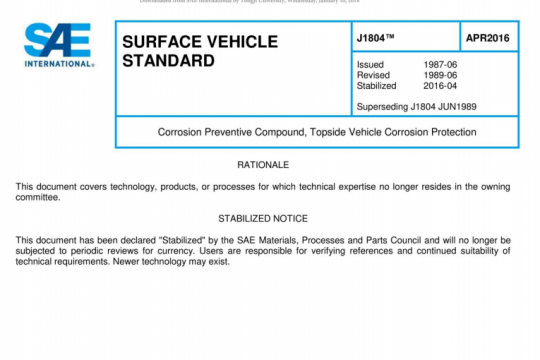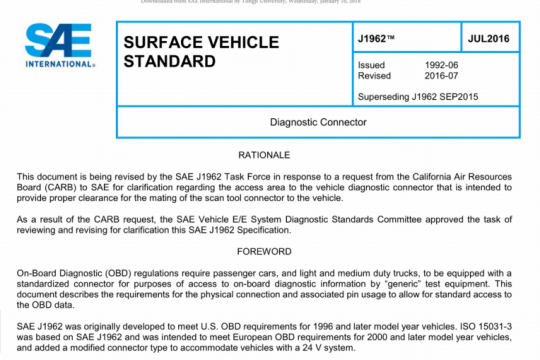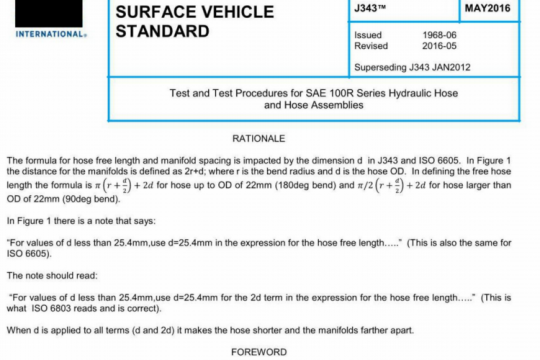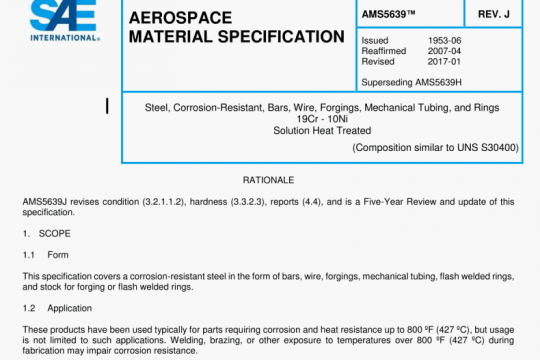SAE J1648:2019 pdf free
SAE J1648:2019 pdf free.Protective Coatings for Fasteners
Surface Condition Prior to Coating- – The fasteners must be clean and free from rust, chips, scale, dirt,abrasives, excessive iron oxide, or other foreign materials. If protective lubricants or coatings are applied to prevent rusting in storage then they must not be tacky or difficult to remove in the cleaning process before finishing.
PRIOR TO ELECTROPLATING- Steel fasteners containing 0.35% or more carbon at the surface or heat treated to 32 HRC (320 HV) or higher hardness shall be cleaned per the requirements in ASTM B 242. Steel parts containing less than 0.35% carbon at the surface, or lower than 30 HRC (302 HV) in hardness shall be cleaned per instructions in ASTM B 183.
PRIOR TO MECHANICAL PLATING -The same procedures apply for the different steel carbon contents and hardnesses expressed for cleaning prior to electroplating, except electrolytic cleaning is not permitted and acids for treatment must be inhibited. Flash copper deposit must be applied by the immersion plating process.
Brittleness -Fasteners shall be free from hydrogen embrittlement or other factors which may impart bittleness from the finishing processes. That includes cleaning, coating, and coating stripping. AlI heat treat operations including stress relief after cold forming, temper after quench, and hydrogen embrittlement relief must be completed before subsequent plating and phosphating.
Refer to ASTM B 839 (ISO/DIS 10587) for test method to determine if detrimental embrittlement remains in threaded fasteners. It includes three levels of confidence. ASTM B 849 (ISO/DIS 9587) contains eight standard stress relief treatments. Refer to 7.4 for additional test information.
Zinc- Zinc is another coating which can be applied, either electrically or mechanically onto steel fasteners,generally to 5 μm thickness. Corrosion products are very flocculent. Bright, yellow, and olive drab chromate conversion coatings are applied to deter this and to increase the corrosion resistance. However, chromates provide reduced zinc protection when subsequent heating exceeds 65℃ temperature.SAE J1648 pdf free download.




